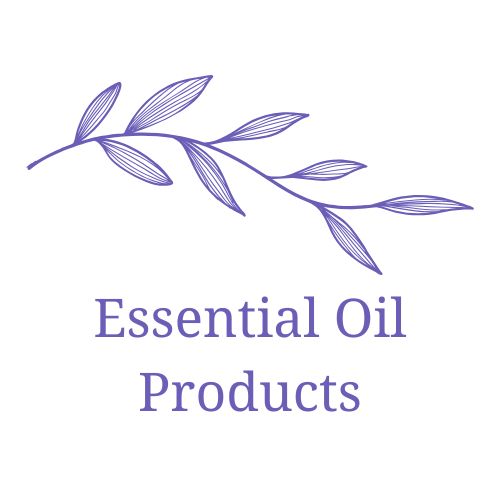Your cart is currently empty!
The Science Behind Essential Oils: Understanding Aromatherapy
The Science Behind Essential Oils: Understanding Aromatherapy
Hey there, friend! If you’ve ever walked into a spa, lit a scented candle, or even just had a sudden spark of joy from the smell of freshly baked cookies, you’ve already dipped your toes into the magical world of aromatherapy. Let’s talk about the science behind it, how it works, and how we might be able to use it in our everyday lives. So grab your favorite essential oil, and let’s dive in!
What is Aromatherapy?
At its core, aromatherapy is all about using aromatic plants—aka essential oils—to improve physical and emotional well-being. The term itself is pretty modern, but people have been harnessing the power of scents for thousands of years. Ancient civilizations like the Egyptians, Greeks, and Chinese utilized aromatic plants in their practices for healing, mummification, and religious ceremonies.
Back then, it wasn’t so much about the scientific understanding of chemistry as it was about tradition and intuition. Fast forward to today, and you’ll find that aromatherapy has evolved into a more structured approach, blending ancient wisdom with modern science. We now have essential oils available from lavender to eucalyptus, each with their own unique profiles and benefits.
The Science of Smell
Okay, let’s dig into the nitty-gritty of how scent actually affects our brains. You know that sudden rush of nostalgia you get from a familiar smell? That’s scent interacting with the olfactory bulb, which is part of the brain’s limbic system. This area is responsible for emotions, memories, and even behaviors. Crazy, right?
When you inhale an essential oil, tiny molecules travel through your nasal cavity and engage the olfactory nerves. This can trigger various emotional responses—whether it’s calming your nerves with lavender or energizing you with citrus scents. Different oils can stir up positive emotions, reduce feelings of stress, and even improve cognitive function. So next time you’re feeling a bit off, just remember that some good old aromatherapy might be just the thing to reset your mood!
Research on Essential Oils and Health
The scientific community has jumped on the essential oil bandwagon, and there is an expanding body of research exploring their effects. While much of it is still evolving, there are a few exciting findings worth mentioning!
For instance, there have been studies suggesting that tea tree oil can be effective in combating certain bacteria and fungi. Furthermore, research on lavender oil has shown promise in alleviating anxiety and improving sleep quality. Other oils like peppermint have been studied for their potential to improve cognitive performance and memory.
Of course, research is still developing. Some studies may have limitations, such as small sample sizes or reliance on self-reported data. But the trends are encouraging, and the science underneath suggests essential oils may have legitimate health benefits when used correctly.
Case Studies in Aromatherapy
Now, let’s get a little more personal. There are tons of testimonials and case studies out there that demonstrate just how powerful these little bottles can be. Let’s take a look at a couple of interesting examples.
-
The Anxiety Relief of Lavender: Imagine Jane, a college student struggling with anxiety leading up to her exams. After discovering lavender essential oil, she decided to give it a shot. She would dab a little on her wrists and inhale the calming scent before her tests. To her surprise, she found a noticeable decrease in her anxiety levels and was able to approach her exams with a more relaxed demeanor.
-
Peppermint and Headaches: Then, there’s Mark, a busy professional who often suffered from tension headaches. After doing some research, he decided to try peppermint oil. He applied diluted peppermint oil to his temples during an onset of a headache and found that it provided instant relief. His productivity soared as a result!
These personal stories highlight how essential oils can create positive change in people’s lives, whether it’s easing anxiety or providing natural relief from headaches.
Integrating Aromatherapy into Health Practices
So, how can you incorporate aromatherapy into your own health routine? Great question! Here’s how you can start:
-
Diffusion: Using a diffuser is a super popular method. Just add a few drops of your chosen essential oil to water, and let it diffuse throughout a room. This is an easy way to create a calming environment, whether you’re working or unwinding after a long day.
-
Topical Application: Many people choose to apply diluted essential oils to their skin. Just remember to dilute them with a carrier oil, like coconut or jojoba oil, to avoid irritation. Always do a patch test first!
-
Integrate with Conventional Treatments: If you’re undergoing medical treatment, speak with your healthcare provider about integrating aromatherapy into your routine. Essential oils can complement treatments for conditions like anxiety, pain management, and sleep disorders.
-
Create a Ritual: Whether it’s a calming bedtime routine with chamomile oil or energizing yourself with citrus during your morning routine, creating consistent rituals can enhance your mental state.
In summary, the intersection of science and the age-old practice of aromatherapy is an exciting field that continues to grow. Whether you’re chasing that calming feeling after a long day or seeking natural remedies for stress or headaches, essential oils have the potential to be a wonderful addition to your health and wellness toolkit. Just remember to do your research and connect with qualified professionals if you’re unsure about integrating these practices into your life.
So, the next time you light that lavender candle or roll on that peppermint oil, remember—you’re not just enjoying a lovely scent. You’re engaging in a time-honored practice that is backed by the science of smell. How cool is that? Happy scent hunting!

Leave a Reply